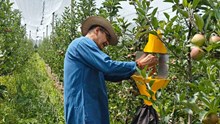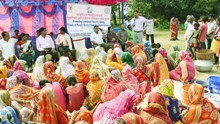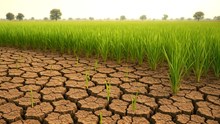
Raksha Bandhan, celebrated in early August, is steeped in tradition. Sisters tie the rakhi and share sweets with brothers as a gesture of love and blessings. Festival desserts play a central role in this ritual. Among them, classics like besan ladoo, motichoor ladoo, coconut laddoo, and malai peda evoke nostalgia and warmth in every bite. Trends have recently embraced lighter versions like dates‑nut barfi and oat halwa, yet the festival’s core offerings remain deeply rooted in tradition.
Gulab Jamun
Gulab Jamun is synonymous with celebration. It is a deep-fried ball made from khoya or milk powder, soaked in warm sugar syrup. Its melt-in-the-mouth texture and fragrant cardamom-scented syrup make it a timeless treat during Raksha Bandhan. A single bite evokes childhood memories of joyous family moments around sweets.
Besan Ladoo
Made from roasted chickpea flour (besan), ghee, and sugar, besan ladoos are classic festival sweets known for their rich and nutty flavor. These laddoos are deeply associated with Indian rituals and are often gifted to siblings as symbols of sweetness and tradition.
Motichoor Ladoo
Motichoor ladoos are made from tiny, syrupy boondi balls bound together into bright orange or golden spheres. Their lightness and bright color make them a festive favorite, loved for their soft, melt-in-the-mouth texture. These laddoos are especially popular at Muslim and Hindu celebrations alike.
Coconut Ladoo
Coconut laddoos combine grated coconut with jaggery or condensed milk, forming soft, flavorful spheres. These sweets are popular for Rakhi and require minimal effort yet deliver aromatic sweetness and crumbly delight.
Malai Peda
Malai peda is made by cooking milk solids (khoya) with sugar, cardamom, and saffron. The end result is a soft, fragrant sweet that literally melts in the mouth. This delicacy is cherished for its creamy texture and royal appeal.
Rice Kheer and Phirni
Kheer, made by slow cooking rice in milk and flavored with cardamom, saffron, and dry fruits, is a beloved Rakhi dessert. Phirni follows a similar path but uses ground rice and is often served in clay bowls chilled. Both puddings reflect simplicity yet deliver rich festive flavors.
Gajar Ka Halwa
This winter delicacy of grated carrots, milk, khoya, ghee, and nuts is deeply aromatic and richly textured. Gajar ka Halwa is popular across North India and often made during Raksha Bandhan, especially in cooler months, for its warming and nutritious quality.
Mysore Pak
Originating from the royal kitchens of Mysore, this fudge-like sweet is made with gram flour, generous ghee, and sugar, flavoured with cardamom. Its melt-in-the-mouth texture and buttery richness make it a royal treat for festivals. Popular also in Bangladesh and Pakistan under names like Monsur.
Ghevar
This disc-shaped sweet is made by frying a thin batter into a honeycomb-like disc and soaking it in sugar syrup. Ghevar is closely associated with monsoon festivals like Teej and Raksha Bandhan in Rajasthan and neighboring states. Often topped with malai or rabri, it’s a visual and flavorful showstopper.
Oats‑Almond Halwa & Date‑Nut Barfi
While traditional sweets dominate Rakhi platters, many now opt for healthier alternatives. Oats‑almond halwa, for example, combines fiber-rich oats and protein-packed almonds, sweetened naturally with jaggery. Similarly, date‑nut barfi uses blended dates combined with nuts to form nutritious slices. These sweets offer energy, satisfaction, and less refined sugar than typical mithai.
These ten desserts vary from the regal richness of malai peda and ghevar to the humble yet wholesome options like coconut laddoo or oats halwa. Each sweet reflects a different region, tradition, or health-conscious choice yet all come together under the common theme of Raksha Bandhan: shared love and care. Whether you choose classic mithai or modern healthy versions, preparing these sweets at home adds heartfelt authenticity and joy to your festive celebrations.
















